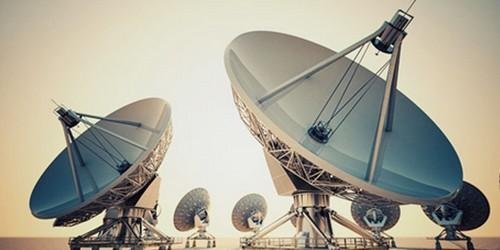In an increasingly interconnected world, the demand for reliable and widespread communication channels has never been higher. Satellite distribution services have emerged as a crucial component of modern communication infrastructures, enabling the delivery of television, internet, and data services across vast distances. This blog explores the intricacies of satellite distribution services, their benefits, challenges, technological advancements, and their pivotal role in global connectivity.
Understanding Satellite Distribution Services
Satellite distribution services utilize satellites in orbit to transmit and receive signals that facilitate communication across the globe. These services can be categorized into several types, including direct broadcast satellite (DBS) services, satellite internet services, and satellite data distribution services. By harnessing satellite technology, providers can offer coverage to remote and underserved areas that traditional terrestrial networks often overlook.
Types of Satellite Distribution Services
- Direct Broadcast Satellite (DBS): DBS services deliver television programming directly to satellite dishes installed at consumers’ homes. This service provides high-quality video and audio signals, allowing viewers to access a wide range of channels without relying on cable or fiber-optic networks.
- Satellite Internet Services: These services provide internet access via satellite connections. They are particularly valuable in rural or remote areas where traditional broadband options are limited. Satellite internet allows users to browse, stream, and communicate over the web with reasonable speeds, although latency can be an issue.
- Satellite Data Distribution: This encompasses services that facilitate the transmission of data for various applications, including weather forecasting, emergency services, and military communications. Satellite data distribution is essential for industries that require real-time information, such as agriculture, maritime, and aviation.
- Mobile Satellite Services (MSS): These services enable communication for mobile users, including ships, airplanes, and remote field personnel. MSS ensures connectivity for users on the move, offering voice and data services regardless of location.
- Global Navigation Satellite Systems (GNSS): While primarily used for navigation, GNSS data is also essential for various applications, including mapping, timing, and agriculture. These systems rely on satellites to provide precise positioning information.
The Benefits of Satellite Distribution Services
1. Global Coverage
One of the most significant advantages of satellite distribution services is their ability to provide coverage in remote and underserved areas. Unlike terrestrial networks, which require extensive physical infrastructure, satellites can reach vast distances, connecting users in rural locations and developing countries. This global reach is crucial for bridging the digital divide and ensuring access to information and services.
2. Rapid Deployment
Satellite distribution services can be deployed quickly compared to traditional communication infrastructures. Once a satellite is in orbit, service providers can offer coverage to large areas without the need for extensive ground installations. This rapid deployment makes satellite services invaluable in emergencies, such as natural disasters, where immediate communication is critical.
3. Scalability and Flexibility
Satellite distribution services can be easily scaled to meet growing demand. As user numbers increase or as new technologies emerge, providers can adapt their services to accommodate changes without significant infrastructural modifications. This flexibility ensures that satellite services remain relevant in a rapidly evolving technological landscape.
4. Cost-Effectiveness
While the initial investment in satellite technology can be high, the long-term costs often prove to be more economical compared to terrestrial networks. Satellite distribution reduces the need for extensive cabling and infrastructure, making it a cost-effective solution for reaching remote areas. Additionally, operational costs can be lower due to the efficiency of satellite technology.
5. Reliability
Satellite distribution services are generally reliable, offering consistent connectivity even in challenging conditions. Unlike terrestrial networks that may be affected by physical disruptions (e.g., natural disasters, infrastructure damage), satellites maintain their operational capabilities, ensuring continued service availability.
The Challenges of Satellite Distribution Services
Despite their many benefits, satellite distribution services face several challenges:
1. Latency Issues
One of the primary drawbacks of satellite communication is latency, which is the time it takes for data to travel from the sender to the receiver. Satellite signals must travel to and from satellites in orbit, resulting in delays that can affect real-time applications, such as online gaming and video conferencing. While advancements in low Earth orbit (LEO) satellite technology aim to reduce latency, it remains a concern for some users.
2. Weather Sensitivity
Satellite signals can be affected by weather conditions, particularly heavy rain or storms. This phenomenon, known as “rain fade,” can disrupt communication and impact signal quality. Providers must invest in technologies and practices to mitigate these effects and ensure consistent service.
3. High Initial Costs
The costs associated with launching and maintaining satellites can be substantial. While operational costs may be lower in the long run, the high initial investment can be a barrier for some providers. Additionally, end-users may face installation fees for satellite dishes and equipment.
4. Regulatory Hurdles
Satellite distribution services must navigate complex regulatory environments, which can vary by country. These regulations may impact licensing, spectrum allocation, and operational practices, posing challenges for providers seeking to expand their services internationally.
Technological Advancements in Satellite Distribution Services
The landscape of satellite distribution services is continuously evolving, driven by technological advancements:
1. Low Earth Orbit (LEO) Satellites
The development of LEO satellite constellations has revolutionized satellite distribution services. By operating closer to Earth, LEO satellites reduce latency and improve signal quality. Companies like SpaceX with its Starlink project and OneWeb are leading the way in deploying LEO satellites to enhance internet access globally.
2. Advanced Antenna Technologies
The advent of phased array antennas and electronically steerable antennas has improved satellite communication capabilities. These technologies allow for more efficient signal tracking, enabling users to maintain strong connections even while in motion.
3. Increased Data Capacity
New satellite technologies are capable of supporting higher data rates and larger bandwidths, allowing providers to offer more robust services to users. This increased capacity is essential for meeting the growing demand for high-definition content, cloud services, and real-time data applications.
4. Enhanced Security Features
As the reliance on satellite distribution services grows, so does the need for robust security measures. Providers are implementing advanced encryption and authentication protocols to protect user data and ensure secure communication channels.
The Role of Satellite Distribution Services in Various Industries
Satellite distribution services are integral to a wide range of industries, enhancing their operations and capabilities:
1. Telecommunications
Telecommunications companies leverage satellite distribution to expand their reach, particularly in remote areas where traditional infrastructure is lacking. By integrating satellite services with terrestrial networks, telecom providers can offer seamless connectivity to their customers.
2. Broadcasting
Satellite services have revolutionized broadcasting, enabling the transmission of television and radio signals to audiences worldwide. With DBS and other satellite services, viewers can access a diverse array of programming, enhancing cultural exchange and entertainment options.
3. Agriculture
Farmers utilize satellite data distribution for precision agriculture, enabling them to monitor crop health, manage irrigation, and optimize yields. Satellite imagery provides valuable insights that improve decision-making and resource management.
5. Transportation and Logistics
The transportation industry relies on satellite distribution for navigation, tracking, and communication. Shipping companies use satellite technology to monitor vessels and ensure timely deliveries, while aviation relies on GNSS for safe navigation.
The Future of Satellite Distribution Services
The future of satellite distribution services is bright, with several key trends expected to shape the industry:
1. Expansion of LEO Constellations
The deployment of LEO satellites will continue to expand, providing more users with access to high-speed internet and reducing latency. As more companies enter the market, competition will drive innovation and lower costs for consumers.
2. Integration with 5G Networks
As 5G technology becomes more prevalent, satellite distribution services will increasingly integrate with terrestrial networks. This hybrid approach will enhance connectivity options for users, ensuring seamless access to data and communication services.
3. Enhanced User Experience
With advancements in technology, user experience will continue to improve. Faster speeds, reduced latency, and more reliable connections will enhance the overall quality of satellite services, making them more appealing to consumers and businesses alike.
4. Focus on Sustainability
As environmental concerns grow, the satellite industry is likely to prioritize sustainable practices. This includes developing eco-friendly satellites, reducing space debris, and exploring renewable energy sources for satellite operations.
Conclusion
Satellite distribution services have become an essential component of modern communication infrastructures, providing global connectivity and access to information. From broadcasting and telecommunications to agriculture and disaster management, the impact of satellite technology is profound and far-reaching.
As the industry continues to evolve with advancements in technology and increasing demand, satellite services will play a crucial role in bridging the digital divide and ensuring that everyone, regardless of location, can participate in the global conversation.
Read More – Squint Eye Treatment: Causes & Solutions



More Stories
Site Oficial Para Cassino Online E Apostas No Brasil
Site Oficial Para Cassino Online E Apostas No Brasil
Site Oficial Sobre Cassino Online At The Apostas No Brasil